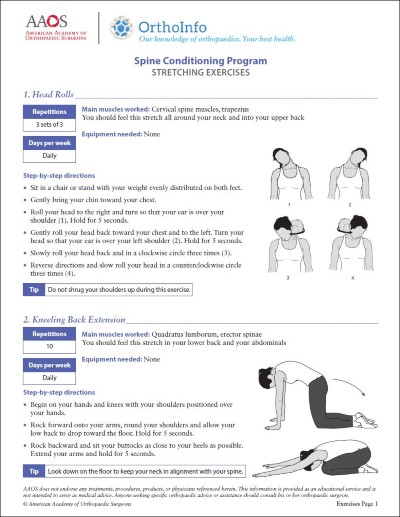Staying Healthy
Backpack Safety
Backpacks are a popular and practical way for children and teenagers to carry schoolbooks and supplies. They are designed to distribute the weight of the load among some of the body's strongest muscles. When used correctly, backpacks are a good way to carry the necessities of the school day.
Tips for Proper Use of Backpacks
Backpacks that are too heavy or worn incorrectly can cause problems for children and teenagers. Improperly used backpacks may injure muscles and joints. This can lead to back, neck, and shoulder pain.
Scoliosis is a sideways curve of the spine that develops in about 5% of children during adolescence. Heavy backpacks do not cause scoliosis.
The following guidelines can help your family use backpacks safely.
Choosing the Right Backpack
When choosing a backpack, look for one that is appropriate for the size of your child. In addition, look for some of the following features:
- Two wide, padded shoulder straps
- Padded back
- Waist strap if planning to carry heavy loads
- Lightweight backpack
- Rolling backpack if planning to carry heavy loads
Injury Prevention
To prevent injury when using a backpack, do the following:
- Always use both shoulder straps when carrying the backpack. The correct use of both of the wide, well-padded shoulder straps will help distribute the weight of the backpack across the back.
- Tighten the straps to keep the load closer to the back.
- Organize the items inside so that heavier items are low and toward the center of the backpack.
- Pack light, removing items if the backpack is too heavy. Carry only those items that are required for the day:
- If possible, leave unnecessary books at home or school.
- If carrying a water bottle, choose a smaller bottle that will not be as heavy when it is full.
- If bringing sports gear to school, pack it in a separate bag that can be stored in a locker during the school day.
- Lift properly by bending at the knees when picking up a backpack.
- Consider using a crossbody bag as a good alternative for carrying books and supplies.
Tips for Parents
Parents can help ensure their child's safety by doing the following:
- Encourage your child or teenager to tell you about any back, neck, or shoulder pain during or after carrying a backpack. These symptoms may indicate poor backpack fit or too much weight being carried.
- Watch your child put on and take off the backpack to see if it is a struggle. If the backpack seems too heavy, have your child remove some of the books and carry them in his or her arms to ease the load on the back. Also review the distribution of weight in the backpack and place heavier items low and toward the center of the backpack.
- Do not ignore any back pain in a child or teenager.
- Talk to the school about lightening the load. Team up with other parents to encourage changes.
- Encourage your child to stop at their locker when time permits throughout the day to drop off or exchange heavier books.
- If your child has back pain that does not improve, consider scheduling an appointment with your pediatrician.
Last Reviewed
June 2024
Contributed and/or Updated by
Peer-Reviewed by
AAOS does not endorse any treatments, procedures, products, or physicians referenced herein. This information is provided as an educational service and is not intended to serve as medical advice. Anyone seeking specific orthopaedic advice or assistance should consult his or her orthopaedic surgeon, or locate one in your area through the AAOS Find an Orthopaedist program on this website.







